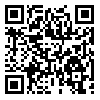Volume 10, Issue 4 (2022)
Health Educ Health Promot 2022, 10(4): 649-656 |
Back to browse issues page
Download citation:
BibTeX | RIS | EndNote | Medlars | ProCite | Reference Manager | RefWorks
Send citation to:



BibTeX | RIS | EndNote | Medlars | ProCite | Reference Manager | RefWorks
Send citation to:
Saadoon N, Kadum S, Ali L. Knowledge and Attitudes of Healthcare Workers regarding Medical Waste Management in Hospitals of Al-Najaf Province. Health Educ Health Promot 2022; 10 (4) :649-656
URL: http://hehp.modares.ac.ir/article-5-62791-en.html
URL: http://hehp.modares.ac.ir/article-5-62791-en.html
1- College of Health & Medical Technology, Middle Technical University, Baghdad, Iraq
Keywords: Public Hospitals [MeSH], Medical Waste Disposal [MeSH], Attitude of Health Personnel [MeSH]
Full-Text [PDF 1313 kb]
(1728 Downloads)
| Abstract (HTML) (1042 Views)
Full-Text: (149 Views)
Introduction
Hospitals are health institutions that supply heath treatment, protect people's health, and save their lives. Simultaneously, they produce waste and by-products. The management of this waste is a complicated process and for this process to be influential, it should be understood and directed by all healthcare workers starting from the cleaners to the senior administrators [1]. Hospitals generate several kinds of liquid, solid, and gaseous waste in large quantities [2]. Globally, each country has a generation rate of medical waste ranging from 0.5 to 3.0 Kg/bed/day [3] and approximately 85% of this waste is non-hazardous or general waste while the rest (15%) is a hazardous waste [4]. Medical waste management (MWM) is one of the components that reflect the ability of the hospital to provide a good standard of health care. Hospitals, especially in developing countries, usually face difficulties in monitoring MWM [5], including Iraq where the process of management is not safe and medical waste is not classified into hazardous or non-hazardous waste, which makes the actual volume of hazardous waste higher, thus poses a threat to the environment and public health [6]. MWM refers to the ways of separating, transporting, storing, treating, and disposal of hazardous and non-hazardous waste that is generated as a result of the process of providing health care [7]. The responsibility of MWM is shared between various sectors starting from health institutions down to municipality services and the major role of the environment ministry that participates in monitoring different phases of waste disposal [8].
Since 2020 so far, the already unsustainable increase in the generation of medical waste was suddenly exacerbated by the COVID-19-pandemic [9], and the rapid utilization of masks, protective clothing, and large amounts of other medical supplies has generated large amounts of hazardous medical waste which can cause several environmental hazards, mainly pollution of the atmosphere, waters, and soil [10]. Healthcare workers have a great role in the management of medical waste and one of the major key factors for proper MWM is the knowledge, attitudes, and practices (KAP) of the healthcare workers in hospitals regarding MWM, over and above, research on this important issue has been very limited, and there is a grave need for information for planning in the future and providing data are needed to obtain a reliable picture of this situation [11].
This study aimed to assess the knowledge and attitudes of healthcare workers on MWM and determine the relationship between the socio-demographic characteristics of healthcare workers with their knowledge and attitudes at public hospitals.
Instrument and Methods
A descriptive cross-sectional study continued for the period from 2nd January to 31st March 2022 and was conducted at public hospitals of Al-Najaf province (Al-Sadder Medical City, Al-Zahraa Teaching Hospital, Al-Hakeem General Hospital, Al-Furat Al-Awsatt Teaching Hospital, Al-Manathera General Hospital, Imam Sajjad General Hospital, Al-Haydaria General Hospital, Al-Mushkhab General Hospital, and Al-Qadisiyah General Hospital). Al-Najaf is located to the southwest of Baghdad, the capital of Iraq. It surrounding by Babylon, Karbala, Al-Anbar, Al-Qadisiyah, and Al-Muthanna governorates and has international borders with Saudi Arabia [12]. The study population consists of all healthcare workers who work in hospitals of Al-Najaf province which were 9447 persons according to the Al-Najaf Health Directorate/ Statistics Department. The sample size was 443 participants estimated using the Steven K. Thompson sample size calculator shown, and an additional 20% for the loss or refusal to participate by some respondents:

Where: n=sample size; N=Population size; z=Confidence level at 95% (1.96); d=Error proportion (0.05); P=Probability (0.5)
The sampling technique was conducted in two stages, at the first stage, a proportional random sampling technique (Stratified random sampling technique) was done to select many participants from each of the 9 hospitals based on the number of healthcare workers in each hospital. This was based on the numbers of healthcare workers obtained from the Al-Najaf Health Directorate where healthcare workers were grouped into 9 strata.

In the second stage (on the level of each hospital), a Stratified random sampling was again employed to select the participants to ensure adequate representation from all categories of healthcare workers. The healthcare workers were grouped into three strata (medical staff, paramedical staff, and housekeeping staff), then participants were selected randomly by simple random sampling from each stratum.
The researchers develop a structured questionnaire depending on the National Guide to Infection Control in the Iraqi Health Institution and the previous study [13]. The questionnaire was consisting of 3 parts; the first part was about demographic data. The second part was about knowledge, which contains 5 domains including the 4 stages of MWM in addition to the general information of MWM. The third part was about attitude. Using a 3-point Likert scale regarding knowledge (26 questions) score, each question had three responses (3=Yes, 2=Don’t know, and 1=No). Then the evaluation of knowledge was categorized into “poor” <52, “fair” =52-64, and “good” >65. The same for the attitude (14 questions) score, each question had three responses (3=agree, 2=neutral, and 1=disagree). Then the evaluation of attitudes is categorized into “poor” <28, “fair” 28-34, and “good” =>35.
Firstly, ethical approval and all administrative agreements were obtained from the College of Health and Medical Technology/ Baghdad/ Community Health Department and the research committee at Middle Technical University. Secondly, followed a formal agreement from the AL-Najaf Health Directorate/ Human Development Training Center that in turn provided official permissions directed to all hospitals of the study. Finally, the researcher obtained an oral agreement from participants to participate voluntarily in the study.
Analysis of data was carried out using SPSS 25.
Findings
In total, 443 healthcare workers participate with a mean±SD of age 29.18±7.68 years ranging from 20 to 59 years. Most of them were 20-29 years, females, baccalaureate, the experience of 1-5 years, paramedical staff, and working at wards. Regarding training on MWM, 69.1% of them did not undergo any training program (Table 1).
In general, the overall assessment of participants' knowledge about MWM was fair (69.9%). The percentage of good knowledge among paramedical staff was 29.35%, higher than medical and housekeeping staff who have the same percentage approximately (15%). Participants' responses according to their knowledge regarding MWM are demonstrated in Table 2.
According to Table 3, the overall assessment of participants’ attitudes about MWM, 51.9% had good attitudes. The percentage of good attitudes among paramedical staff was 56.13% compared to 48.4% of medical staff and 27.5% of housekeeping staff.
Statistically, the current study showed a significant association between knowledge and years of experience and a highly significantly associated with profession, workplace, and training respectively (Table 4).
Statistically, the current study showed a significant association between attitudes and educational level also highly significantly associated with profession (Table 5).
Table 1) Demographic characteristics of the study sample
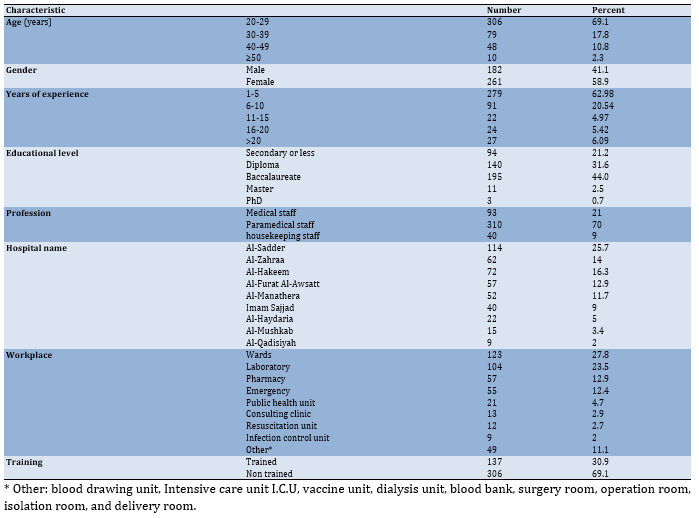
Table 2) Responses of participants according to their knowledge of MWM

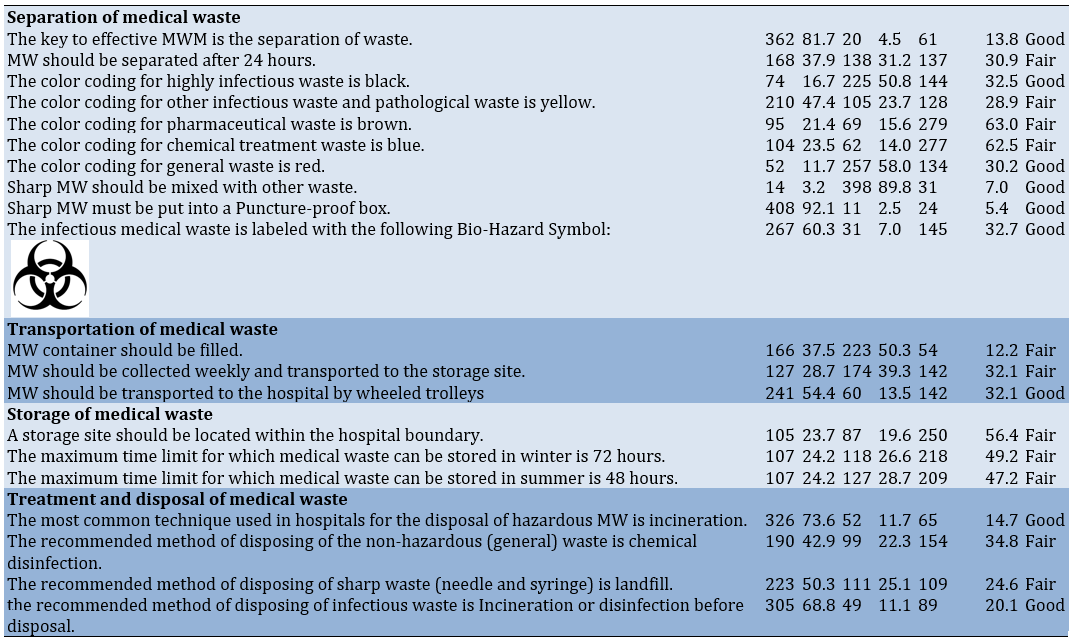
Table 3) Responses of participants according to their attitudes regarding (MWM).
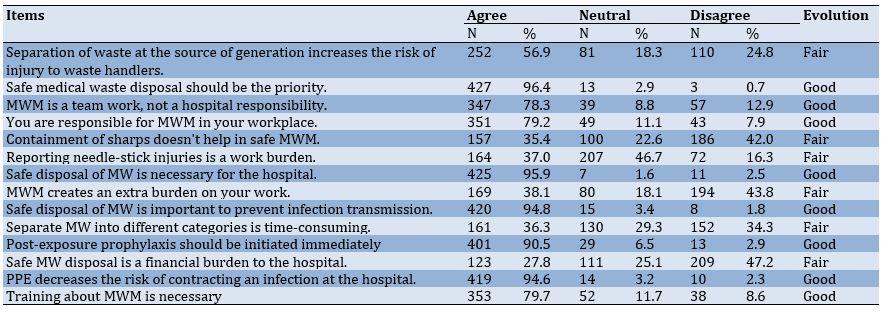
Table 4) Association between participant's Knowledge and demographic data
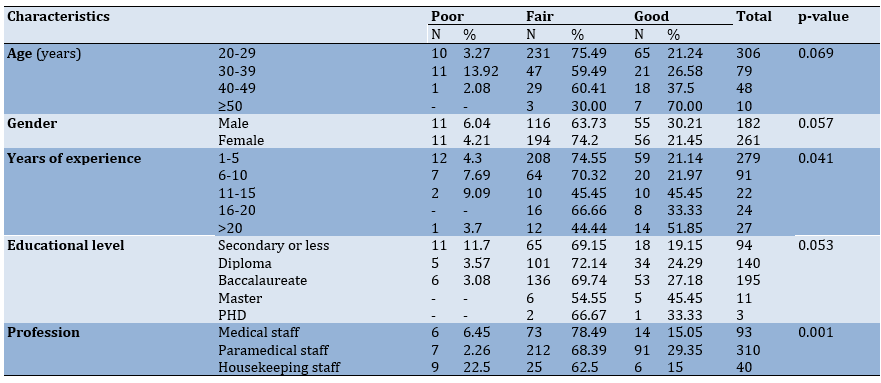

Table 5) Association between participant's attitudes and demographic data
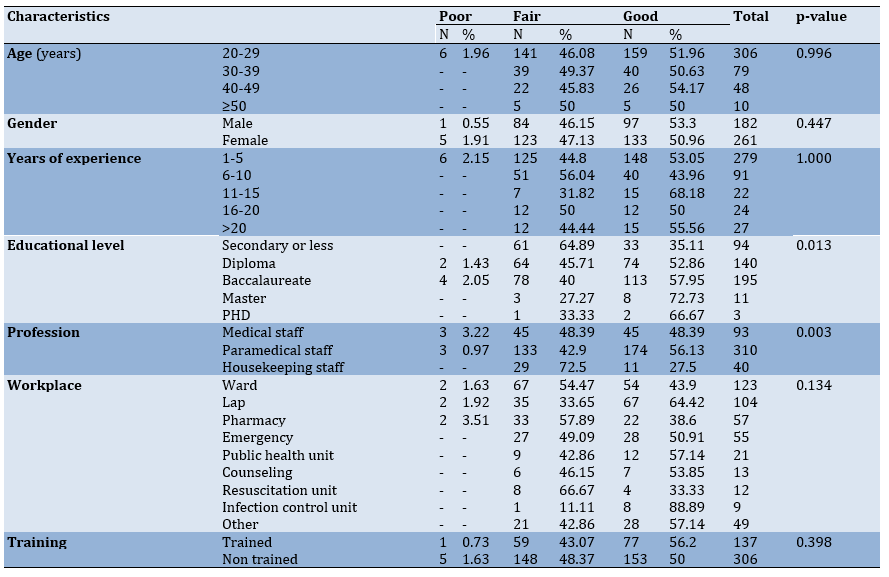
Hospitals are health institutions that supply heath treatment, protect people's health, and save their lives. Simultaneously, they produce waste and by-products. The management of this waste is a complicated process and for this process to be influential, it should be understood and directed by all healthcare workers starting from the cleaners to the senior administrators [1]. Hospitals generate several kinds of liquid, solid, and gaseous waste in large quantities [2]. Globally, each country has a generation rate of medical waste ranging from 0.5 to 3.0 Kg/bed/day [3] and approximately 85% of this waste is non-hazardous or general waste while the rest (15%) is a hazardous waste [4]. Medical waste management (MWM) is one of the components that reflect the ability of the hospital to provide a good standard of health care. Hospitals, especially in developing countries, usually face difficulties in monitoring MWM [5], including Iraq where the process of management is not safe and medical waste is not classified into hazardous or non-hazardous waste, which makes the actual volume of hazardous waste higher, thus poses a threat to the environment and public health [6]. MWM refers to the ways of separating, transporting, storing, treating, and disposal of hazardous and non-hazardous waste that is generated as a result of the process of providing health care [7]. The responsibility of MWM is shared between various sectors starting from health institutions down to municipality services and the major role of the environment ministry that participates in monitoring different phases of waste disposal [8].
Since 2020 so far, the already unsustainable increase in the generation of medical waste was suddenly exacerbated by the COVID-19-pandemic [9], and the rapid utilization of masks, protective clothing, and large amounts of other medical supplies has generated large amounts of hazardous medical waste which can cause several environmental hazards, mainly pollution of the atmosphere, waters, and soil [10]. Healthcare workers have a great role in the management of medical waste and one of the major key factors for proper MWM is the knowledge, attitudes, and practices (KAP) of the healthcare workers in hospitals regarding MWM, over and above, research on this important issue has been very limited, and there is a grave need for information for planning in the future and providing data are needed to obtain a reliable picture of this situation [11].
This study aimed to assess the knowledge and attitudes of healthcare workers on MWM and determine the relationship between the socio-demographic characteristics of healthcare workers with their knowledge and attitudes at public hospitals.
Instrument and Methods
A descriptive cross-sectional study continued for the period from 2nd January to 31st March 2022 and was conducted at public hospitals of Al-Najaf province (Al-Sadder Medical City, Al-Zahraa Teaching Hospital, Al-Hakeem General Hospital, Al-Furat Al-Awsatt Teaching Hospital, Al-Manathera General Hospital, Imam Sajjad General Hospital, Al-Haydaria General Hospital, Al-Mushkhab General Hospital, and Al-Qadisiyah General Hospital). Al-Najaf is located to the southwest of Baghdad, the capital of Iraq. It surrounding by Babylon, Karbala, Al-Anbar, Al-Qadisiyah, and Al-Muthanna governorates and has international borders with Saudi Arabia [12]. The study population consists of all healthcare workers who work in hospitals of Al-Najaf province which were 9447 persons according to the Al-Najaf Health Directorate/ Statistics Department. The sample size was 443 participants estimated using the Steven K. Thompson sample size calculator shown, and an additional 20% for the loss or refusal to participate by some respondents:

Where: n=sample size; N=Population size; z=Confidence level at 95% (1.96); d=Error proportion (0.05); P=Probability (0.5)
The sampling technique was conducted in two stages, at the first stage, a proportional random sampling technique (Stratified random sampling technique) was done to select many participants from each of the 9 hospitals based on the number of healthcare workers in each hospital. This was based on the numbers of healthcare workers obtained from the Al-Najaf Health Directorate where healthcare workers were grouped into 9 strata.

In the second stage (on the level of each hospital), a Stratified random sampling was again employed to select the participants to ensure adequate representation from all categories of healthcare workers. The healthcare workers were grouped into three strata (medical staff, paramedical staff, and housekeeping staff), then participants were selected randomly by simple random sampling from each stratum.
The researchers develop a structured questionnaire depending on the National Guide to Infection Control in the Iraqi Health Institution and the previous study [13]. The questionnaire was consisting of 3 parts; the first part was about demographic data. The second part was about knowledge, which contains 5 domains including the 4 stages of MWM in addition to the general information of MWM. The third part was about attitude. Using a 3-point Likert scale regarding knowledge (26 questions) score, each question had three responses (3=Yes, 2=Don’t know, and 1=No). Then the evaluation of knowledge was categorized into “poor” <52, “fair” =52-64, and “good” >65. The same for the attitude (14 questions) score, each question had three responses (3=agree, 2=neutral, and 1=disagree). Then the evaluation of attitudes is categorized into “poor” <28, “fair” 28-34, and “good” =>35.
Firstly, ethical approval and all administrative agreements were obtained from the College of Health and Medical Technology/ Baghdad/ Community Health Department and the research committee at Middle Technical University. Secondly, followed a formal agreement from the AL-Najaf Health Directorate/ Human Development Training Center that in turn provided official permissions directed to all hospitals of the study. Finally, the researcher obtained an oral agreement from participants to participate voluntarily in the study.
Analysis of data was carried out using SPSS 25.
Findings
In total, 443 healthcare workers participate with a mean±SD of age 29.18±7.68 years ranging from 20 to 59 years. Most of them were 20-29 years, females, baccalaureate, the experience of 1-5 years, paramedical staff, and working at wards. Regarding training on MWM, 69.1% of them did not undergo any training program (Table 1).
In general, the overall assessment of participants' knowledge about MWM was fair (69.9%). The percentage of good knowledge among paramedical staff was 29.35%, higher than medical and housekeeping staff who have the same percentage approximately (15%). Participants' responses according to their knowledge regarding MWM are demonstrated in Table 2.
According to Table 3, the overall assessment of participants’ attitudes about MWM, 51.9% had good attitudes. The percentage of good attitudes among paramedical staff was 56.13% compared to 48.4% of medical staff and 27.5% of housekeeping staff.
Statistically, the current study showed a significant association between knowledge and years of experience and a highly significantly associated with profession, workplace, and training respectively (Table 4).
Statistically, the current study showed a significant association between attitudes and educational level also highly significantly associated with profession (Table 5).
Table 1) Demographic characteristics of the study sample

Table 2) Responses of participants according to their knowledge of MWM


Table 3) Responses of participants according to their attitudes regarding (MWM).

Table 4) Association between participant's Knowledge and demographic data


Table 5) Association between participant's attitudes and demographic data

Discussion
This study showed only 25.1% of the study sample had good knowledge about (MWM) while (69.9%) had fair knowledge, this may be because the majority of the studied sample was the new staff who had experience of fewer than 5 years and were not trained in stages of MWM. This result is similar to [14] in India. In general, paramedical staff demonstrated better knowledge 29.35% compared with medical and housekeeping staff who have the same percentage (15%). This result agrees with a study done in Basra/ Iraq by [1] but disagrees with studies [15-17] in which medical staff were the highest good knowledge than others. These results might be the highest percentage of trained healthcare workers about MWM in our study were from paramedical staff. However, all healthcare workers have regular contact with MW and must be knowledgeable about MWM.
The study showed few participants 25.7% agree with Iraq, Ethiopia, and India by [18-20] that had information about the percentage of hazardous medical waste to general waste, this may be due to the absence of the national guideline in the hospitals that contain this important information. A percentage of 84.7% of the studied sample was knowledgeable about the four stages of the MWM process as well as the major source of medical waste. These results agree with [21] in India, and it considers a logical result because they are in direct contact with medical waste, and every day they see large amounts of medical waste generated by their hospitals. The present study shows that 81.7% of the studied sample have good knowledge that the separation of medical waste is a golden step in MWM, but they lack knowledge about the time of medical waste separation where only 31.2% of them have an idea about the separation of medical waste must be happened immediately not after 24 hours, this may be that the majority of them have not trained about MWM, especially the separation, in addition to unavailability of educational posters that explain this importance easy step. These results agree with in India [22] that 78.8 of the study population considered the separation of waste as the effective key in the management of medical waste but disagree with the study [23] in Thailand in which 94.8% of participants said the separation of medical waste must have happened immediately.
Depending on the color coding of medical waste, approximately half of the participants correctly determine the color coding for highly infectious waste, other infectious waste, and general waste, while low percentages 21.4% and 23.5% of them knew the color coding for pharmaceutical waste and chemical treatment waste respectively. These results disagree with studies [24, 25] in Saudi Arabia and India; this difference in results may be due to the color coding system in all Al-Najaf hospitals isn't implemented correctly according to the Iraqi Health Ministry Guide. Regarding dealing with sharp medical waste and the safe method of its separation, the current study shows that 89.8% and 92.1% which corresponded with the study [23] in Thailand where participants have good knowledge about the importance of separation of sharp waste from other waste and put them in hard container respectively, due to the availability of safety boxes for the disposal of sharps medical waste. That 60.3% of the studied sample agree with the study [26] in India where they can identify Bio-Hazard Symbol depending on present many posters, billboards, and sometimes waste containers, which make these symbols familiar to healthcare workers.
Because of insufficient waste containers in hospitals of the present study or inconsistency with the amount of generated waste, half of the studied sample 50.3% disagree with the study [23] in Thailand that found 82% have good knowledge about filling the waste container to no more than 3/4 full, as well as 39.3% of our study participants conflict with the study [15] in Pakistan in which 88.5% of the total participant had good knowledge about the daily collection of medical waste, and about 54.4% of our studied sample knew about the transport of medical waste by wheeled trolleys which also conflict with a study in Yemen [27] that showed 77.3% knew vehicles. This difference in results may be attributed to the majority of our studied samples don't deal with the transportation of medical waste except for housekeeping staff.
Depending on the perfect time of medical waste storage, about 26.6% and 28.7% of the studied sample which were lower than [28] and [29] in India knew about the maximum time limit storage in cold and hot seasons respectively. According to results [30], medical wastes in Al-Najaf hospitals were stored for multiple days, a practice which is not recommended, so make the healthcare workers lack information about maximum storage time. Finally, and depending on concepts of treatment and disposal, this study showed that 73.6% of participants prefer incineration as the most common technique for disposal and treatment of hazardous medical waste which agrees with the study [25] in India. This comes back to the fact that incineration is considered the typical way used for the management of hospital waste in Iraq [31] and this method has a great ability in minimizing and reducing infectious waste [32].
When talking about the attitudes generally, the present study showed that Just over half (51.9%) of the studied sample were considered to have a good attitude towards MWM which agree with studies in India [33] that show 54%, and Mansoura/ Egypt [17] that showed 57.5%, but lower than reported in Oman [34] that showed 91.2%. This is somewhat of a surprise and needs further investigation. A good attitude towards MWM in hospitals is an important finding with the WHO stating that concerning safe MWM A good attitude towards MWM in the hospitals is an important finding under the WHO states, "the human element is more important than the technology. Almost any system of treatment and disposal that is operated by well-trained, and well-motivated staff can provide more protection for staff, patients, and the community than an expensive or sophisticated system that is managed by staff who do not understand the risks, and the importance of their contribution" [35].
There are 2 limitations such as:
- No cooperation from some healthcare workers (especially male nurses) may be because of working loads.
- Inability of some of the housekeeping staff for reading and writing.
Conclusion
The current study concluded that only 25.1% of healthcare workers had good knowledge of MWM, and about half of them 51.9% had a good attitude. The good knowledge and attitude of paramedical staff were higher than medical and housekeeping staff.
Acknowledgments: None declared.
Ethical Permissions: ethical approval and all administrative agreements were obtained from the College of Health and Medical Technology/ Baghdad/ Community Health Department and the research committee at Middle Technical University.
Conflicts of Interests: None declared.
Authors’ Contributions: Saadoon NB (First Author), Introduction Writer/ Methodologist/Main Researcher/ Statistical Analyst/Discussion Writer (40%); Kadum SA (Second Author), Introduction Writer/ Methodologist/ Assistant Researcher/Statistical Analyst/Discussion Writer (30%); Ali LH (Third Author), Introduction Writer/ Methodologist/ Assistant Researcher/Statistical Analyst/ Discussion Writer (30%)
Funding/Support: None declared.
This study showed only 25.1% of the study sample had good knowledge about (MWM) while (69.9%) had fair knowledge, this may be because the majority of the studied sample was the new staff who had experience of fewer than 5 years and were not trained in stages of MWM. This result is similar to [14] in India. In general, paramedical staff demonstrated better knowledge 29.35% compared with medical and housekeeping staff who have the same percentage (15%). This result agrees with a study done in Basra/ Iraq by [1] but disagrees with studies [15-17] in which medical staff were the highest good knowledge than others. These results might be the highest percentage of trained healthcare workers about MWM in our study were from paramedical staff. However, all healthcare workers have regular contact with MW and must be knowledgeable about MWM.
The study showed few participants 25.7% agree with Iraq, Ethiopia, and India by [18-20] that had information about the percentage of hazardous medical waste to general waste, this may be due to the absence of the national guideline in the hospitals that contain this important information. A percentage of 84.7% of the studied sample was knowledgeable about the four stages of the MWM process as well as the major source of medical waste. These results agree with [21] in India, and it considers a logical result because they are in direct contact with medical waste, and every day they see large amounts of medical waste generated by their hospitals. The present study shows that 81.7% of the studied sample have good knowledge that the separation of medical waste is a golden step in MWM, but they lack knowledge about the time of medical waste separation where only 31.2% of them have an idea about the separation of medical waste must be happened immediately not after 24 hours, this may be that the majority of them have not trained about MWM, especially the separation, in addition to unavailability of educational posters that explain this importance easy step. These results agree with in India [22] that 78.8 of the study population considered the separation of waste as the effective key in the management of medical waste but disagree with the study [23] in Thailand in which 94.8% of participants said the separation of medical waste must have happened immediately.
Depending on the color coding of medical waste, approximately half of the participants correctly determine the color coding for highly infectious waste, other infectious waste, and general waste, while low percentages 21.4% and 23.5% of them knew the color coding for pharmaceutical waste and chemical treatment waste respectively. These results disagree with studies [24, 25] in Saudi Arabia and India; this difference in results may be due to the color coding system in all Al-Najaf hospitals isn't implemented correctly according to the Iraqi Health Ministry Guide. Regarding dealing with sharp medical waste and the safe method of its separation, the current study shows that 89.8% and 92.1% which corresponded with the study [23] in Thailand where participants have good knowledge about the importance of separation of sharp waste from other waste and put them in hard container respectively, due to the availability of safety boxes for the disposal of sharps medical waste. That 60.3% of the studied sample agree with the study [26] in India where they can identify Bio-Hazard Symbol depending on present many posters, billboards, and sometimes waste containers, which make these symbols familiar to healthcare workers.
Because of insufficient waste containers in hospitals of the present study or inconsistency with the amount of generated waste, half of the studied sample 50.3% disagree with the study [23] in Thailand that found 82% have good knowledge about filling the waste container to no more than 3/4 full, as well as 39.3% of our study participants conflict with the study [15] in Pakistan in which 88.5% of the total participant had good knowledge about the daily collection of medical waste, and about 54.4% of our studied sample knew about the transport of medical waste by wheeled trolleys which also conflict with a study in Yemen [27] that showed 77.3% knew vehicles. This difference in results may be attributed to the majority of our studied samples don't deal with the transportation of medical waste except for housekeeping staff.
Depending on the perfect time of medical waste storage, about 26.6% and 28.7% of the studied sample which were lower than [28] and [29] in India knew about the maximum time limit storage in cold and hot seasons respectively. According to results [30], medical wastes in Al-Najaf hospitals were stored for multiple days, a practice which is not recommended, so make the healthcare workers lack information about maximum storage time. Finally, and depending on concepts of treatment and disposal, this study showed that 73.6% of participants prefer incineration as the most common technique for disposal and treatment of hazardous medical waste which agrees with the study [25] in India. This comes back to the fact that incineration is considered the typical way used for the management of hospital waste in Iraq [31] and this method has a great ability in minimizing and reducing infectious waste [32].
When talking about the attitudes generally, the present study showed that Just over half (51.9%) of the studied sample were considered to have a good attitude towards MWM which agree with studies in India [33] that show 54%, and Mansoura/ Egypt [17] that showed 57.5%, but lower than reported in Oman [34] that showed 91.2%. This is somewhat of a surprise and needs further investigation. A good attitude towards MWM in hospitals is an important finding with the WHO stating that concerning safe MWM A good attitude towards MWM in the hospitals is an important finding under the WHO states, "the human element is more important than the technology. Almost any system of treatment and disposal that is operated by well-trained, and well-motivated staff can provide more protection for staff, patients, and the community than an expensive or sophisticated system that is managed by staff who do not understand the risks, and the importance of their contribution" [35].
There are 2 limitations such as:
- No cooperation from some healthcare workers (especially male nurses) may be because of working loads.
- Inability of some of the housekeeping staff for reading and writing.
Conclusion
The current study concluded that only 25.1% of healthcare workers had good knowledge of MWM, and about half of them 51.9% had a good attitude. The good knowledge and attitude of paramedical staff were higher than medical and housekeeping staff.
Acknowledgments: None declared.
Ethical Permissions: ethical approval and all administrative agreements were obtained from the College of Health and Medical Technology/ Baghdad/ Community Health Department and the research committee at Middle Technical University.
Conflicts of Interests: None declared.
Authors’ Contributions: Saadoon NB (First Author), Introduction Writer/ Methodologist/Main Researcher/ Statistical Analyst/Discussion Writer (40%); Kadum SA (Second Author), Introduction Writer/ Methodologist/ Assistant Researcher/Statistical Analyst/Discussion Writer (30%); Ali LH (Third Author), Introduction Writer/ Methodologist/ Assistant Researcher/Statistical Analyst/ Discussion Writer (30%)
Funding/Support: None declared.
Article Type: Descriptive & Survey |
Subject:
Health Promotion Setting
Received: 2022/05/5 | Accepted: 2022/07/20 | Published: 2022/09/11
Received: 2022/05/5 | Accepted: 2022/07/20 | Published: 2022/09/11
References
1. Hasan ZA, Abdul-Wahid SA, Al-Musawi AA. Assessment of health care staff knowledge regarding medical waste management in Basrah hospitals. Turk J Physiother Rehabil. 2021;32:3. [Link]
2. Awad AA, Al Bajari F. Environmental impacts of medical waste treatment and management by burning inside health facilities. Int J Civ Eng Technol. 2018;9(5):41-53. [Link]
3. Al Naemi H, Izuka K, Edquibal C, Al-Korbi N, Al Kuwari N, Al Homaid M. Quantitative assessment of medical waste management in Hamad medical corporation-Qatar. Occup Dis Environ Med. 2021;9(3):112-26. [Link] [DOI:10.4236/odem.2021.93009]
4. Parida A, Capoor MR, Bhowmik KT. Knowledge, attitude, and practices of bio-medical waste management rules, 2016; bio-medical waste management (amendment) rules, 2018; and solid waste rules, 2016, among health-care workers in a tertiary care setup. J Lab Physicians. 2019;11(4):292-9. [Link] [DOI:10.4103/JLP.JLP_88_19]
5. Maamari O, Brandam C, Lteif R, Salameh D. Health care waste generation rates and patterns: the case of Lebanon. Waste Manag. 2015;43:550-4. [Link] [DOI:10.1016/j.wasman.2015.05.005]
6. Abdulsamad Q. Evaluation of hospitals waste management process, the case study of Duhok city. J Duhok Univ. 2021;24:88-106. [Link] [DOI:10.26682/sjuod.2021.24.1.11]
7. Sarkees AN. The assessment of nurses' knowledge about health care waste management. Polytech J. 2018;8(2):35-43. [Link] [DOI:10.25156/ptj.2018.8.2.218]
8. Al-nakkash IAH, Al-hiyaly SAK, Faraj BH, Kasim SA. Assessment of health care waste management (HCWM) in Iraq; effects and control. Int J Innov Sci Res Technol. 2019;4(5). [Link]
9. Singh N, Ogunseitan OA, Tang Y. Medical waste: current challenges and future opportunities for sustainable management. Crit Rev Environ Sci Technol. 2022;52(11):2000-22. [Link] [DOI:10.1080/10643389.2021.1885325]
10. Ye J, Song Y, Liu Y, Zhong Y. Assessment of medical waste generation, associated environmental impact, and management issues after the outbreak of COVID-19: a case study of the Hubei province in China. PLoS One. 2022;17(1):e0259207. [Link] [DOI:10.1371/journal.pone.0259207]
11. Soyam GC, Hiwarkar PA, Kawalkar UG, Soyam VC, Gupta VK. KAP study of bio-medical waste management among health care workers in Delhi. Int J Community Med Public Heal. 2017;4:9. [Link] [DOI:10.18203/2394-6040.ijcmph20173840]
12. Alrikabi NK, Almosherefawi OJ. Reality analysis of the state of spatial distribution of green areas using geographic information systems (GIS) - the holy city of Najaf as a case study. IOP Conf Ser Earth Environ Sci. 2021;754:012009. [Link] [DOI:10.1088/1755-1315/754/1/012009]
13. Jalal SM, Akhter F, Abdelhafez AI, Alrajeh AM. Assessment of knowledge, practice and attitude about biomedical waste management among healthcare professionals during COVID-19 crises in Al-Ahsa. Healthcare. 2021;9(6):747. [Link] [DOI:10.3390/healthcare9060747]
14. Nagaraju B, Padmavathi GV, Puranik DS, Shantharaj MP, Sampulatha SP. A study to assess the knowledge and practice on bio-medical waste management among the health care providers working in PHCs of Bagepalli Taluk with the view to prepare informational booklet. Int J Med Biomed Res. 2013;2:1. [Link] [DOI:10.14194/ijmbr.216]
15. Khan MJ, Hamza MA, Zafar B, Mehmod R, Mushtaq S. Knowledge, attitude and practices of health care staff regarding hospital waste handling in tertiary care hospitals of Muzaffarabad, AJK, Pakistan. Int J Sci Rep. 2017;3(7):220. [Link] [DOI:10.18203/issn.2454-2156.IntJSciRep20173094]
16. Hakim SA, Mohsen A, Bakr I. Knowledge, attitudes and practices of health-care personnel towards waste disposal management at Ain Shams University Hospitals, Cairo. East Mediterr Health J. 2014;20(5):347-54. [Link] [DOI:10.26719/2014.20.5.347]
17. Mohamed HH, Abd El-Kader RG, Al-Wehedy Ibrahim A. Knowledge, attitude and practice of health care personnel about medical waste management in selected family health centers in Mansoura, Egypt. Int J Innov Res Med Sci. 2019;4:349. [Link] [DOI:10.23958/ijirms/vol04-i06/668]
18. Mohammed SM, Othman N, Hussein AH, Rashid KJ. Knowledge, attitude and practice of health care workers in Sulaimani health facilities in relation to medical waste management. Kurdistan J Appl Res. 2017;2(2):143-150. [Link] [DOI:10.24017/science.2017.2.21]
19. Deress T, Jemal M, Girma M, Adane K. Knowledge, attitude, and practice of waste handlers about medical waste management in Debre Markos town healthcare facilities, northwest Ethiopia. BMC Res Notes. 2019;12:146. [Link] [DOI:10.1186/s13104-019-4174-7]
20. Abrol A, Mahajan S, Chauhan M, Kumar N. Awareness and practices regarding biomedical waste management among health care workers in a tertiary care hospital in Himachal Pradesh. Indian J Microbiol Res. 2019;6(1):92-6. [Link] [DOI:10.18231/2394-5478.2019.0019]
21. Indupalli AS, Motakpalli K, Giri PA, Ahmed BN. Knowledge, attitude & practices regarding biomedical waste management amongst nursing staff of Khaja Banda Nawaz institute of medical sciences, Kalburgi, Karnataka. Natl J Community Med. 2015;6(4):562-5. [Link]
22. Basu M, Das P, Pal R. Assessment of future physicians on biomedical waste management in a tertiary care hospital of WEST Bengal. J Nat Sci Biol Med. 2012;3(1):38-42. [Link] [DOI:10.4103/0976-9668.95945]
23. Akkajit P, Romin H, Assawadithalerd M. Assessment of knowledge, attitude, and practice in respect of medical waste management among healthcare workers in clinics. J Environ Public Health. 2020;2020:8745472. [Link] [DOI:10.1155/2020/8745472]
24. AL Arbash HA, Mahmood SE, Sayyad Y. Knowledge, attitude and practices of healthcare workers regarding bio-medical waste of COVID-19 in Aseer Region, KSA. Int J Pharm Res. 2021;13(2). [Link] [DOI:10.31838/ijpr/2021.13.02.224]
25. Karmakar N, Datta SS, Datta A, Nag K. A cross-sectional study on knowledge, attitude and practice of biomedical waste management by healthcare personnel in a tertiary care hospital of Agartala, Tripura. Natl J Res Community Med. 2016;5:189-195. [Link]
26. Mishra S, Sahu C, Mahananda MR. Study on knowledge, attitude and practices (KAP) of bio-medical waste Management at Veer Surendra Sai institute of medical science and research (VIMSAR), Burla. Int J Emerg Res Manag Technol. 2015;4(11):2278. [Link]
27. Alwabr GMA, Al-Salehi KAS. Knowledge, attitudes and practices of medical waste management among healthcare staff in dental clinics of Sana'a city, Yemen. J Health Sci Res. 2020;5(2):84-90. [Link]
28. Mehta TK, Shah PD, Tiwari KD. A knowledge, attitude and practice study of biomedical waste management and bio-safety among healthcare workers in a tertiary care government hospital in western India. Natl J Community Med. 2018;9:5. [Link]
29. Letho Z, Yangdon T, Lhamo C, Limbu CB, Yoezer S, Jamtsho T, et al. Awareness and practice of medical waste management among healthcare providers in national referral hospital. PLoS One. 2021;16(1):e0243817. [Link] [DOI:10.1371/journal.pone.0243817]
30. Khan Haali, Alshukri AS. Evaluation of environmental and health risks related with the management of medical waste in Najaf city. J Eng Sci Technol. 2020;15(6):4383-91. [Link]
31. Mensoor MK. Medical waste management in Iraq: a case study of Baghdad. Waste Dispos Sustain Energy. 2020;2(4):329-35. [Link] [DOI:10.1007/s42768-020-00055-8]
32. Fatima MK. Evaluation of medical solid wastes management in some hospitals in Najaf city/Iraq. Kufa J Eng. 2016;7:3. [Link]
33. Olaifa A, Govender RD, Ross AJ. Knowledge, attitudes and practices of healthcare workers about healthcare waste management at a district hospital in KwaZulu-Natal. South Afr Fam Pract. 2018;60(5):137-45. [Link] [DOI:10.1080/20786190.2018.1432137]
34. Al Balushi AY, Ullah MM, Ali Al Makhamri A, Sulieman Al AlawiF, Khalid M, Masaud Al Ghafri H. Knowledge, attitude and practice of biomedical waste management among health care personnel in a secondary care hospital of Al Buraimi governorate, Sultanate of Oman. Glob J Health Sci. 2018;10:3. [Link] [DOI:10.5539/gjhs.v10n3p70]
35. Rudraswamy S, Sampath N, Doggalli N. Staff's attitude regarding hospital waste management in the dental college hospitals of Bangalore city, India. Indian J Occup Environ Med. 2012;16(2):75-8. [Link] [DOI:10.4103/0019-5278.107077]
| Rights and permissions | |
 |
This work is licensed under a Creative Commons Attribution-NonCommercial 4.0 International License. |





